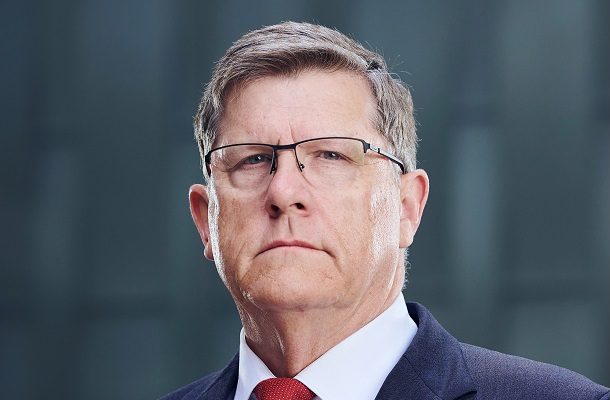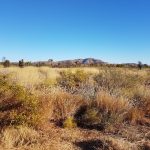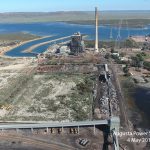Australia – A complacent nation

We can’t fully predict what happens next, let alone control what happens next. We can however prepare for whatever happens next.
The COVID-19 pandemic was a dual shock to our health and economic systems. The ongoing widespread lockdowns, the troubled vaccination rollout, interstate rivalries and social dislocation exposed vulnerabilities in many systems that underpin our society.
In 2021 Australians are faced with concurrent, and in some cases existential, challenges. These include climate change and the urgent need to reduce emissions, growing global and regional security risks, a global pandemic which will have persistent societal and economic impacts, a global energy transformation where we are lagging the developed world, and a global market model that has resulted in reduced resilience, as evidenced in the face of recent crises.
The National Resilience Project
Our National Resilience Project posed three fundamental questions to our workshop participants: What is a resilient society? Are we resilient enough? Can we make ourselves more resilient? We postulated three key attributes of a resilient society: shared awareness and shared goals; teamwork and collaboration; and the ability to prepare and mobilise in the face of a crisis.
The Project has highlighted our lack of resilience in all three areas. Faced with a crisis that it had not prepared for; the Federal Government closed the nation down and then applauded its brilliance in preventing outbreaks of the scale seen overseas.
However, 18 months later we remain closed to the outside world, reactive, and crisis managing the present whilst failing to prepare for the significant health and economic challenges we will face in the next few years. We are not unique; the COVID-19 pandemic has exposed a global lack of resilience because of a collective failure of preparedness and mobilisation.
We observe that there is a lack of shared awareness and shared goals in Australia and limited honesty and directness from some Australian politicians about our future challenges. This situation is exacerbated by our Federation’s political systems which has not been able to address our risks and vulnerabilities in a coherent, systemic manner. Political reactions are often too little, too late, and too short-sighted. A complicating factor is that our Federation structure may have been fit for purpose a century ago, but it cannot deal with the constellation of challenges we face today.
Unfortunately, the prevalence of political spin in lieu of substance over the past decade has also dulled our senses to the point of complacency. Neither side of politics is blameless in this respect. Social cohesion enables and derives from social activity, especially collaborative and supportive activity built on a foundation of trust.
Strong, trusting social bonds that survive and thrive in the face of differences of opinions, beliefs, life circumstances and living conditions are crucial for a society or community to be ‘resilient’, especially when confronted by sudden change or catastrophic threats or events.
Federal, state and territory governments need to cooperate on a comprehensive, evidence-based national resilience framework to assess current capabilities and future threats and set national, state, territory, and local policy objectives as part of an overall resilience strategy.
Whilst the formation of the National Cabinet in the early months of the COVID-19 pandemic was met with hope and optimism, that soon faded when the behaviour of Federal and some State leaders regressed into self-interest and power plays, compounded by the partisan elements in the media.
Fit for the Future
As Australia attempts to move on from the COVID-19 pandemic our immediate national challenges are ones of response and recovery. However, we must also prepare for future challenges. A sovereign nation must buttress, rather than outsource, its self-reliance, and while State, Territory and Federal Governments have taken measures to protect and restore the economy in the wake of COVID-19, a broader long-term vision for domestic manufacturing and trusted supply chains would prepare the ground for a more sustainable recovery, and better prepare the nation for the future.
We are likely to see more compounding disasters on a national scale with far-reaching consequences. We need to be better prepared for these disasters. A nationally coordinated and, where appropriate, standardised, and interoperable disaster preparedness and mobilisation system needs to be developed. Business-as-usual, or more correctly business-as-was, is not an option.
Whilst this is a grim assessment there is some cause for cautious optimism. The actions we need to take are not beyond our ability to design and implement. We have considerable expertise and resources in this country.
To address some of our resilience deficiencies, we are recommending the creation of an independent National Resilience Institute. The Institute could contribute to a deeper, apolitical, examination of the issues raised in this report. The aim is to help inform the public policy debate, to improved shared awareness, and to offer ideas on how to improve our national preparedness.
We are living in a time of shared tragedy; we need to refocus our efforts to build societal consensus and trust to enable the collective action necessary to prepare and to adapt to the reality of our changing world. We need leadership from all aspects of Australian society but particularly our most powerful leaders in business, government, and politics.
The cost of inaction is much greater. We have seen courageous political and business leadership in the past; we need to find that again to deal with the future. We, the Australian people, need to act and to demand more of our socio-political system, and of ourselves.
The final report of the GAP/IIER-A National Resilience Project is available here.
What does the ‘new normal’ look like for your business?
Post a comment on First 5000 – Have your Say on LinkedIn today or email editor@first5000.com.au with your story.
Air Vice-Marshal (ret) John Blackburn AO is a consultant in the field of Defence and National Security. Since 2018, he has been the Chairman of the Institute for Integrated Economic Research – Australia (IIER-A).






